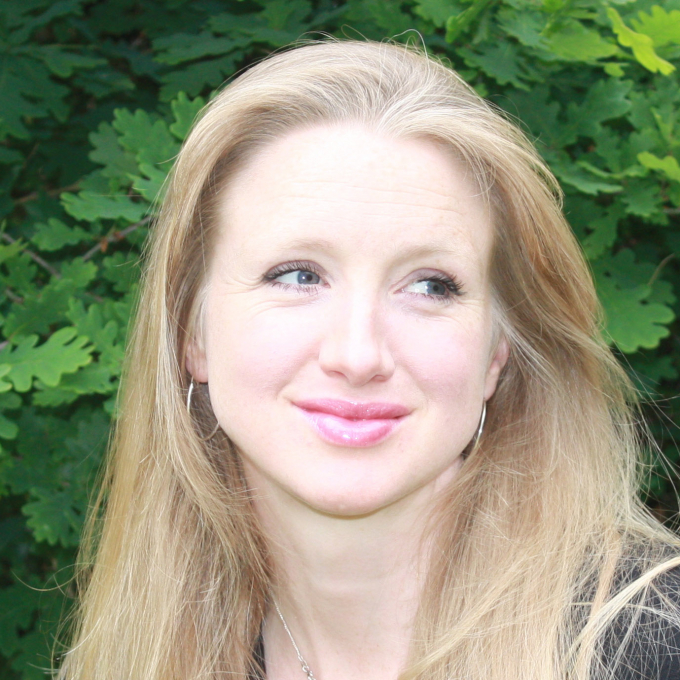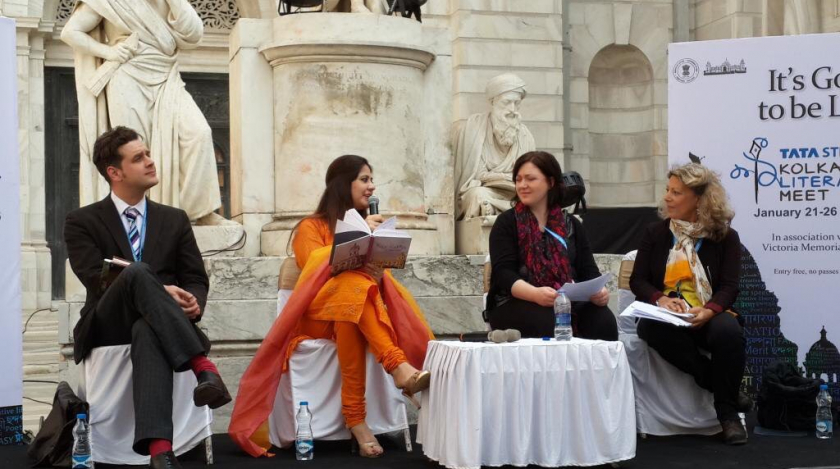
- ©
- Rosie Bennett
Biography
Poet Rebecca Goss grew up in Suffolk and returned to live in the county in 2013. She lived in Liverpool from 1992 – 2013, where she studied English at Liverpool John Moores University. She completed an MA in Creative Writing at Cardiff University, then taught Creative Writing at Liverpool John Moores University for some years.
Her pamphlet ‘Keeping Houston Time’, came out in 1997 with Slow Dancer Press. Her first full-length collection The Anatomy of Structures was published by Flambard Press in 2010. Her poems have appeared in many literary journals, anthologies and have been broadcast on BBC Radio 4 and BBC Arts online. She is a previous recipient of an Authors’ Foundation Grant from the Society of Authors.
Her second collection titled Her Birth was published in July 2013, by Carcanet/Northern House. It was shortlisted for the 2013 Forward Prize for Best Collection and won the Poetry category in The East Anglian Book Awards in 2013. In 2014 she was selected for The Poetry Book Society’s Next Generation Poets.
Critical perspective
The English poet Rebecca Goss shot to prominence with a strikingly intense 2013 collection celebrating the loss of her young daughter. That book, Her Birth attracted much acclaim and earned her a place on that year’s Forward poetry prize shortlist.
'I realise I am the name on the list that no one will know,” she wrote at the time, ”so it means a huge amount to me that the judges felt it should be there,' (Guardian, July 2013). The waves that Her Birth has since made in the poetry world, and her inclusion as one of the Poetry Society’s prestigious Next Generation Poets in 2014, mean that such anonymity is a thing of the past.
The collection was in fact the culmination of a lifetime of practice. Goss started writing poetry at an early age while growing up in Suffolk, and recalls her father’s reading of Seamus Heaney’s poem ‘Trout’ as an early inspiration to fashion her own poems. She found early success, winning the WH Smith Young Writer’s award aged just 15, with a poem praised by the judge Ted Hughes.
Although she has a host of key poetic influences, Goss primarily sees herself as a “frustrated short story writer.” And her flair for stories is clearly central to her work. Critics such as Bernard O’Donoghue have praised Goss’s “narrative compulsion”, and this impulse is there in there through a body of work that often reaches towards the story form. As she has observed of her artistic development,
Stories brought me to writing: the short, American version. I was weaned on the likes of Raymond Carver, Richard Ford, John O’Hara, Jayne Anne Phillips by my Dad. That’s why I became a narrative poet. I loved the economy of the short story form, but even that was too wordy for me. I wanted to tell stories in poems. (campus.poetryschool.com, 2015)
Both economical and engrossing, all of Goss’s work is an attempt to capture this “economy” and drama of the greatest short fiction.
Her first book, The Anatomy of Structures was conceived in this fashion, as a collection of narrative pieces, largely fictional. These poems revealed family stories, and in one remarkable case, followed a parcel of effects from a plane disaster victim. Critics praised Goss’s style as “spare, unshowy and thoroughly honed” (Matt Merritt, Magma 48) and she was highly commended by the Forward Prize 2010 judges as “a very clear voice, catching at the emotional drama of the world, its strangeness, sexiness and occasionally its yearning.”
However, it was a deep personal tragedy that helped propel her to greater prominence, with Her Birth (2013). Five years earlier, Goss’s newborn daughter Ella was diagnosed with Severe Ebstein’s Anomaly, a incurable heart disease, or as one of the key lines from the collection puts it, “the rarest of anomalies / that would flourish / to defeat her.” She lived for only sixteen months. 'There were days', Goss wrote in the weeks after Ella's death, 'when I could not speak. One particular day, my husband and I went for a drive, in silence. Not the silence we had sometimes known before: both of us sulking, after a petty row. This was a dumbstruck silence. We were dumbstruck by what had happened to us'. Goss felt compelled to use poetry to both explore and challenge that dumbstruck feeling, and the resulting collection was both cathartic and a striking artistic success.
Her Birth is a book length sequence that attempts to make the reader understand what one poem calls the “desire for a child, how complicated it might be.” In doing so, Goss follows a great tradition of English-language elegies, from the Middle English poem Pearl, through Wordsworth's Lucy Poems. Like any great elegist, Her Birth pushes similies and analogies to their limit in order to capture loss. Yet it goes beyond this simple transparency of pathos, and approaches difficult subject matter from novel points of view, taking in the effect of grief on relationships, on sense of self, and on one’s sense of poetry.
Some of the best pieces, such as ‘Palliative’, capture the journey of knowledge and self-education that illness can bring. Rifling through a dictionary to define the word of that poem’s title, Goss reflects on the way medical vocabulary can wound and hurt as well as instruct and astonish. The agony of death itself is ultimately captured obliquely in the central poem ‘A Child Dies in Liverpool.’ But the collection’s most powerful stretch comes from what follows, as poems such as 'Why We Had Another Baby' depict the guilt, anxiety and ambivalent joy of moving on to raise other children. One of the most memorable and touching poems imagines the moment when the new child is made aware of the absent sibling:
Telling the Tale
One day, I will beckon with a finger,
curl you on my lap, tell the story
of your sister’s sleep, unbroken
by a kiss. I’ll describe the dawn
we cheered at her arrival; bowed
to beauty, grace and song until a scan
revealed the wicked gift of Ebstein’s
and we watched for sixteen anxious
months, brambles thickening at her heart
with no way through to save her
Formally, Goss demonstrates versatility throughout the collection. Moving between a range of stanzaic forms, typographical experiments capture the movement of playground swings, and render a paper lantern in a diamond of text. For such grave subject matter, the mood is not always dark. The reader is constantly surprised and moved by the tenderness and sharpness of memory, sensation and emotional truth.
Critics were impressed with the achievements of the collection. Helen Dunmore praised the collection’s “‘pared-down precision and scorching intensity. The language, like sea-glass, has been ground by a tide that might have crushed words completely. Instead, it has shaped these translucent poems”. Writing in Poetry London, Katy Evans-Bush called Goss’s anthology “the most painfully personal and the most restrained and sparsely written poetry collection of the year… It’s poetry of witness.” Vanessa Thorpe in the Guardian found in Her Birth “a forward momentum unusual in a poetry collection. Reading it, I found myself gripped.”
Her Birth was shortlisted for the 2013 Forward Prize, won various other prizes, and gained her inclusion on the Poetry’ Society’s 2014 Next Generation Poets list, cementing Goss’s reputation as a mature and respected voice on the British poetic scene.
